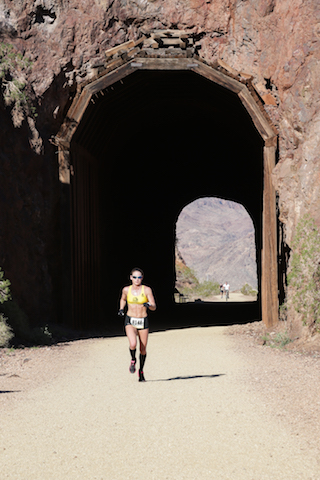
First off – holy moly – I cannot believe that it’s been almost 2 years since my last blog post! But honestly, I’ve been busy, and I didn’t feel I had much to really write about at the time. There’s just so much running content out there – I’ve already written a whole lot (here and for other platforms), and there are some pretty great running podcasts covering essential topics – so it didn’t feel worth cranking out new content “just cause.”
Consider this a quick “catch up with Corky” post, and then I’ll be blogging a bit about the two marathons I ran in 2022 (first ones back since 2019!), the benefits I’ve personally found from working with a coach, and more.
Like many runners, I found myself in a real funk during 2020. Between being furloughed, all races being canceled, gyms closed, and NYC being the epicenter of the pandemic, I lost motivation to do much of anything but keep my running clients motivated, and I watched a lot of documentaries on serial killers and religious cults. I also essentially ate and drank my feelings, leaving me physically and emotionally a shell of the person and athlete I was pre-pandemic. It took a LOT of hard work, patience, and determination, but I clawed my way back to feeling more like myself again.
So, what’s new?
I am now coaching at NYC Equinox clubs, as of Spring 2021. Sadly the Precision Run Studio in NYC didn’t survive the pandemic, and so I was brought into Equinox to coach Precision Run and Elevate classes there. While it was a big adjustment – small business to LARGE business, having to run around to multiple locations within a day to be able to coach multiple classes, and pivoting to coaching on the floor in the club vs. a contained studio experience – but I’ve met some incredible people, and continue to be humbled to lead these classes. If you’re an Equinox member in NYC, come run with me!
With Equinox and Precision Run, I am still recording guided treadmill and outdoor runs – all available on the Equinox+ app. This year, David Siik and I created the first official training plan for Equinox/PR running content – a 5K program (again, all on the app). I have to say, it’s a pretty smart plan, and appropriate for runners of all levels.
In 2021, my partner (now husband!) bought our first house, which was pretty exciting. We’re now In Warwick, NY, which is a very cute and historic village. I’ve traded in urban running for running past cow farms, open space, and trails. I’m still in NYC at least twice per week, so you better believe I make the most of my time there between coaching to run my favorite parts of the city. The best (?) part of our house: we transformed the garage into a gym! I bought a refurbished Woodway Treadmill, and it’s decked out with tons of dumb bells, kettle bells, and even a cage for all the fun cable strength work. The gym is complete with disco lights, a beer fridge, and a life-sized cutout of The Rock – because he’s awesome!
I somehow made it in NYC without catching COVID until Spring 2022 – which felt like a weird victory. While my case wasn’t exactly mild, I’m thankful for vaccines and boosters, and that I was only seriously sidelined from life for a week, and from running for a few weeks.
My client roster in 2022 was the largest yet, and has been essentially capped/at capacity for over a year. There’s always a little ebb and flow, and I am grateful to be in the position where I am sometimes referring runners to other coaches, because I simply can’t take on anymore without compromising the work I provide my athletes – and I won’t compromise that. (That said, never be shy to send an inquiry!)
In 2022 I got married, ran two marathons, and have been reminded daily how much I love what I do. Runners are awesome, and it’s such a joy to support runners of varying experiences and abilities, all chasing down their goals.
Blogs on deck: I have two marathon recaps/reviews on deck – one was a big PR I’d been chasing for 5 years! I’ll share both my personal experiences, but also helpful info incase they are races you may be interested in running. I’ll also share my personal experience of what it’s been like working with my own coach for over a year, and a podcast episode we did together (he’s kinda big deal in the running podcast realm!). I have a few more ideas in mind, but also promise I will never “blog” for the sake of cranking out new content – so hopefully you find it helpful.
Cheers!
Corky
 It’s the time of year where many runners who hibernate during the dark and cold Winter months take their first few miles of the year. It’s also the time of the year for Newbies! Perhaps inspiration from a friend or family member, a stress in life is forcing a change, something has sparked the interest in the sport – new runners are testing out their running legs. If you’re new and flirting with the idea of running, or you’re coming back from a serious hiatus, here are some tips and tricks for getting started.
It’s the time of year where many runners who hibernate during the dark and cold Winter months take their first few miles of the year. It’s also the time of the year for Newbies! Perhaps inspiration from a friend or family member, a stress in life is forcing a change, something has sparked the interest in the sport – new runners are testing out their running legs. If you’re new and flirting with the idea of running, or you’re coming back from a serious hiatus, here are some tips and tricks for getting started.
 This past weekend I stepped up to the starting line of my first of two big goals for 2018. After an amazing experience at
This past weekend I stepped up to the starting line of my first of two big goals for 2018. After an amazing experience at  Last week I posted about the importance of the off season. Today I want to personally share how I handled my off season, and what lessons I learned about myself as an athlete in my latest marathon cycle, and how I’ll plan to make changes in the future. It’s important to understand that our bodies will adapt and change to anything we toss at it – with time, consistency, and a solid combination of work and recovery. It’s always easier to be the coach than the athlete, and I’ve worn both hats for myself for the last few years. While I know my body and my strengths and weaknesses, it’s not without its challenges.
Last week I posted about the importance of the off season. Today I want to personally share how I handled my off season, and what lessons I learned about myself as an athlete in my latest marathon cycle, and how I’ll plan to make changes in the future. It’s important to understand that our bodies will adapt and change to anything we toss at it – with time, consistency, and a solid combination of work and recovery. It’s always easier to be the coach than the athlete, and I’ve worn both hats for myself for the last few years. While I know my body and my strengths and weaknesses, it’s not without its challenges.

